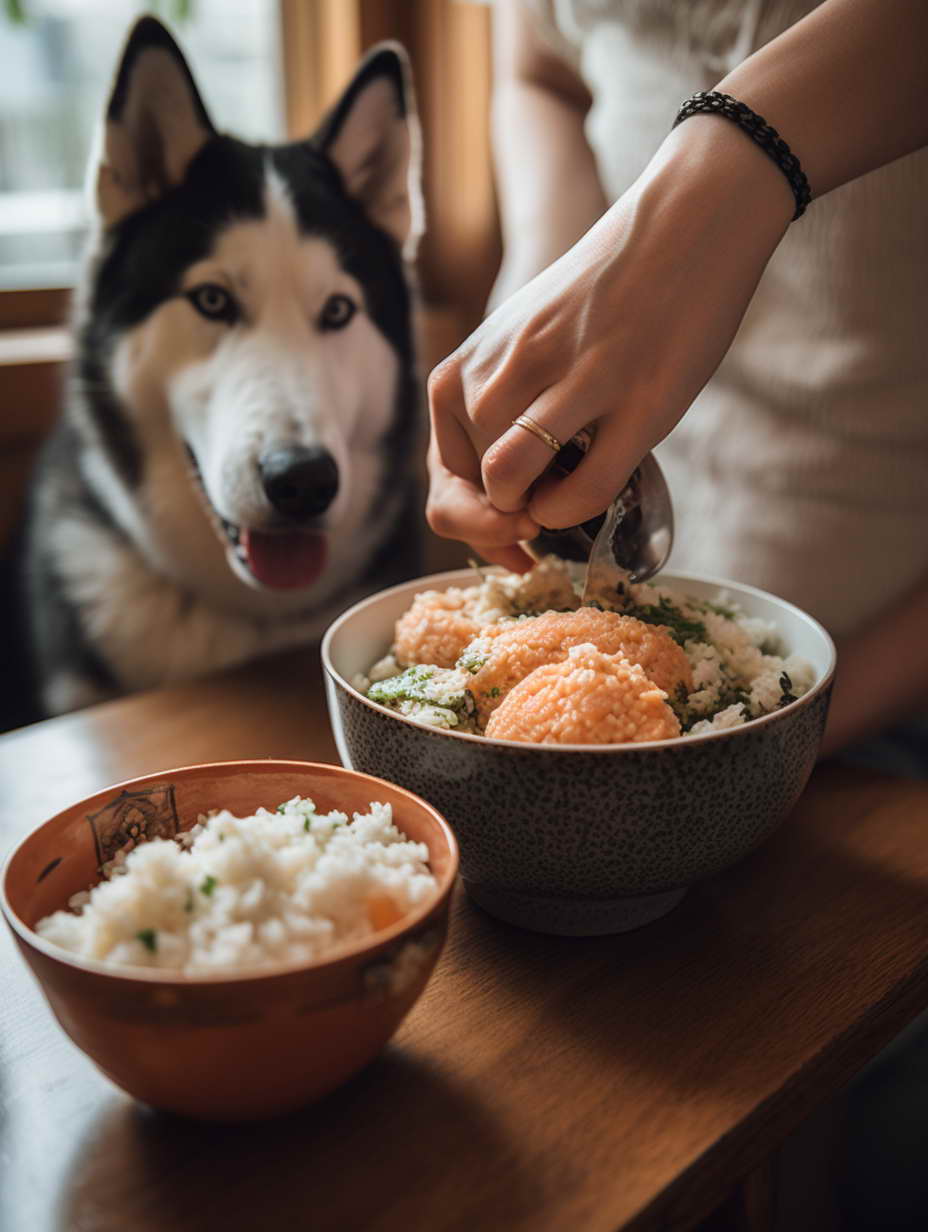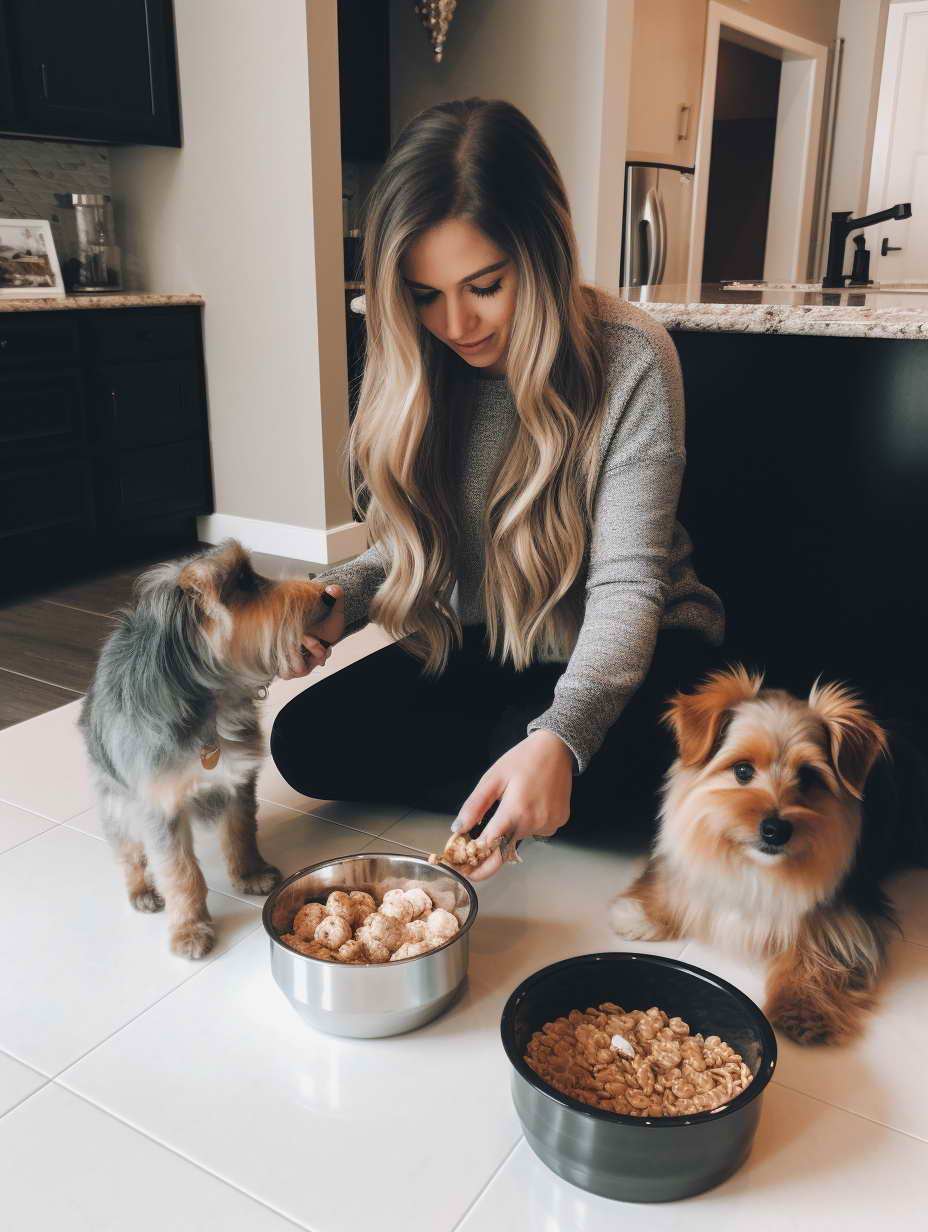Can You Make Dog Food At Home: A Comprehensive Guide
Introduction
Many pet owners today are concerned about the quality of commercial dog food and are turning to homemade options. Making your dog’s food at home can be a rewarding and healthy choice for your furry friend. In this guide, we will explore the process of making homemade dog food, from selecting ingredients to preparing balanced meals. Let’s dive in!
Can You Make Dog Food At Home?
In today’s age of heightened awareness about the quality of pet food, many dog owners are rightfully questioning the contents of commercial dog food. They are eager to explore alternative options to ensure their furry companions receive the best possible nutrition. The resounding answer to this quest for better nutrition is a reassuring “yes” – you absolutely can make dog food at home!
The practice of crafting homemade meals for your canine friend has gained immense popularity and for good reasons. Not only does it allow you to take full control of what goes into your dog’s food bowl, but it also provides several other notable benefits.
Tailored Nutrition
One of the most significant advantages of preparing dog food at home is the ability to tailor your pet’s diet to their specific nutritional requirements. Every dog is unique, and their dietary needs can vary widely based on factors such as age, breed, activity level, and any underlying health conditions they might have. With homemade dog food, you have the flexibility to adjust ingredients and portion sizes to suit your dog’s individual needs.
Quality Ingredients
Commercial dog food often contains a plethora of artificial additives, preservatives, and fillers that may not align with your vision of a healthy diet for your pet. By opting to create your dog’s meals at home, you gain the ability to select high-quality, fresh ingredients that are free from harmful additives. This means you can choose premium proteins, nutrient-rich vegetables, and wholesome grains, ensuring that your dog receives the best possible nutrition.
Avoiding Harmful Additives
When you prepare dog food at home, you have the peace of mind knowing that you are eliminating the risk of exposing your pet to potentially harmful additives. Many commercial dog foods contain artificial colors, flavors, and preservatives that have been linked to various health concerns. By taking charge of your dog’s diet, you can bypass these potential hazards and provide them with the cleanest and healthiest food possible.
Dietary Control
Homemade dog food empowers you to make informed decisions about your pet’s diet. If your dog has allergies or dietary restrictions, it can be challenging to find commercial dog food that meets their needs. However, with homemade meals, you can carefully select ingredients that cater to your dog’s specific requirements, whether that means avoiding certain allergens or accommodating unique dietary preferences.
In conclusion, the ability to make dog food at home is not only feasible but also a commendable choice for responsible pet owners. By embracing this practice, you can ensure that your beloved canine companion receives the best possible nutrition, tailored to their individual needs while steering clear of potentially harmful additives. It’s a rewarding endeavor that allows you to nourish your dog’s health and happiness from the heart of your home.

Getting Started on Making Homemade Dog Food
Embarking on the journey of making homemade dog food is an exciting and responsible decision. However, before you start creating delicious and nutritious meals for your furry friend, there are essential steps to consider in getting started. Let’s explore how to begin this rewarding endeavor.
Planning Your Dog’s Diet
Before you dive into the world of homemade dog food, it’s crucial to plan your pet’s diet meticulously. Proper planning ensures that your dog receives a well-balanced and nutritious diet that meets their specific needs. Here’s how to get started:
Consult Your Veterinarian
Begin by scheduling a consultation with your veterinarian. Your vet can provide valuable insights into your dog’s health, dietary requirements, and any specific considerations based on their age, breed, size, and any existing health conditions. This professional guidance is fundamental in creating a diet that’s tailored to your dog’s unique needs.
Understand Nutritional Requirements
Dogs have distinct nutritional needs, just like humans. You’ll need to understand the essential nutrients required in their diet, including proteins, carbohydrates, fats, vitamins, and minerals. Your vet can provide guidance on the ideal ratios and quantities of these nutrients for your dog.
Calculate Portion Sizes
Once you have a clear understanding of your dog’s nutritional requirements, calculate the portion sizes needed to meet their daily calorie intake. This calculation will help you ensure that your dog receives the right amount of food to maintain a healthy weight.
Essential Ingredients
To craft balanced and wholesome homemade dog food, you’ll need to gather the essential ingredients that will go into your recipes. Here’s a breakdown of these key components:
Protein Source
Proteins are the building blocks of your dog’s muscles and essential for overall health. Common protein sources for homemade dog food include:
- Chicken
- Beef
- Turkey
- Fish
- Lamb
Select a protein source that aligns with your dog’s preferences and dietary requirements. Be sure to cook it thoroughly to eliminate any harmful bacteria.
Vegetables
Vegetables provide essential vitamins, minerals, and fiber in your dog’s diet. Some suitable vegetable options include:
- Carrots
- Peas
- Sweet potatoes
- Green beans
These vegetables not only add nutritional value but also flavor and texture to your dog’s meals.
Grains
Grains can serve as a source of carbohydrates and fiber. Some grains suitable for homemade dog food include:
- Rice
- Quinoa
- Oats
- Barley
Grains can provide energy and help maintain a sense of fullness in your dog.
Supplements
To ensure your dog receives all necessary nutrients, you may need to incorporate supplements into their diet. Common supplements include:
- Calcium
- Fish oil (for essential fatty acids)
- Multivitamins
Consult with your veterinarian to determine the appropriate supplements and their dosage for your dog’s specific needs.
With a well-thought-out plan, an understanding of your dog’s nutritional requirements, and the right ingredients in hand, you’re now ready to embark on the rewarding journey of preparing homemade dog food. The next step involves selecting a suitable recipe and navigating the cooking process with care to ensure your dog’s health and happiness.

Cooking Homemade Dog Food
Cooking homemade dog food is an art and a science that allows you to provide your canine companion with nutritious and delicious meals tailored to their specific needs. This process involves selecting the right recipe, and cooking methods, and ensuring your dog’s meals are balanced and safe. Let’s dive into the details of cooking homemade dog food.
Recipe Selection
Selecting the appropriate homemade dog food recipe is a critical first step. There are numerous recipes available online and in pet care books, but it’s essential to choose one that aligns with your dog’s dietary requirements and your culinary skills. Here’s how to go about it:
Vet-Approved Recipes
Consult with your veterinarian to find vet-approved homemade dog food recipes. These recipes are designed to meet your dog’s nutritional needs and can be trusted for their safety and balance.
Consider Dietary Needs
Take into account any dietary needs or restrictions your dog may have. For example, if your dog has allergies or sensitivities, select a recipe that avoids common allergens.
Age and Size Matters
Puppies, adult dogs, and senior dogs have different nutritional requirements. Choose a recipe that suits your dog’s age and size, as their needs will vary.
Cooking Process
Once you’ve selected a suitable recipe, it’s time to delve into the cooking process. Follow these steps to ensure your homemade dog food is both safe and nutritious:
1. Prepare Ingredients:
Start by gathering and preparing all the selected ingredients. Ensure that your meats are fresh and vegetables are washed and chopped.
2. Cook Thoroughly:
Properly cook all meats to eliminate harmful bacteria. Avoid using excessive spices, salt, or seasoning, as these can be harmful to your dog.
3. Balanced Proportions:
Combine the ingredients in the correct proportions to meet your dog’s specific dietary requirements. Pay attention to the balance between proteins, vegetables, and grains.
4. Avoid Harmful Foods:
Be aware of foods that are toxic to dogs, such as onions, garlic, grapes, and chocolate. Ensure these ingredients are nowhere near your dog’s meal.
5. Storage:
Homemade dog food can be made in batches and stored for future use. Use airtight containers to store unused portions in the refrigerator or freezer to maintain freshness and safety.
6. Rotate Proteins:
To ensure a diverse and well-rounded diet, consider rotating protein sources in your recipes. This helps prevent your dog from developing food sensitivities and ensures they receive a variety of nutrients.
Safety Precautions
Safety is paramount when cooking homemade dog food. Keep the following safety precautions in mind:
- Hygiene: Maintain proper hygiene throughout the cooking process to avoid contamination. Wash your hands and utensils thoroughly.
- Avoid Bones: Never include cooked bones in your dog’s meals, as they can splinter and pose a choking hazard.
- Consult Your Vet: If you’re unsure about any aspect of your dog’s homemade diet, consult your veterinarian. They can provide guidance on recipe selection, portion sizes, and supplements.
Cooking homemade dog food is a fulfilling endeavor that allows you to provide your pet with the best possible nutrition while ensuring their safety. With the right recipe, attention to detail, and a commitment to your dog’s well-being, you can take pride in knowing that you’re nurturing your furry friend from the kitchen with love and care.
FAQs (Frequently Asked Questions)
Is homemade dog food more expensive than commercial dog food?
No, homemade dog food can’t be more expensive than commercial dog food but homemade dog food can be cost-effective when you buy ingredients in bulk and plan your dog’s meals carefully. It’s often comparable in price to high-quality commercial dog food.
Can I make homemade dog food for puppies?
Yes, you can make homemade dog food for puppies, but puppies have specific nutritional needs. Consult your vet for a puppy-specific homemade dog food recipe.
Are there any risks in making homemade dog food?
Yes, there are risks in making homemade dog food. The main risk is an unbalanced diet. Ensure you follow a vet-approved recipe to meet your dog’s nutritional needs.
Can I use leftovers for homemade dog food?
Yes, you can use leftovers for homemade dog food. Leftovers can be used, but ensure they are safe and suitable for your dog. Avoid ingredients like onions, garlic, and excessive spices.
Can homemade dog food help with allergies?
Yes, homemade dog food helps with allergies. Homemade dog food allows you to control ingredients, making it easier to avoid allergens that may affect your dog.
Is raw dog food a better option?
Yes, raw dog food is a better option. Raw food diets have their proponents, but they require careful handling to prevent bacterial contamination. Consult your vet before switching to a raw diet.
Conclusion
Making dog food at home is a fantastic way to ensure your furry friend gets the nutrition they need while avoiding potentially harmful additives. Remember to consult with your veterinarian and follow a balanced recipe. Your dog will thank you with wagging tails and good health!

Leave a Reply